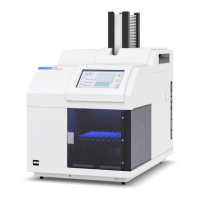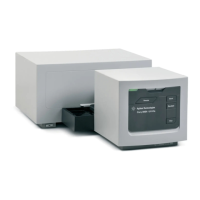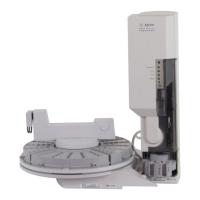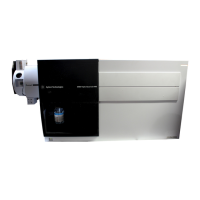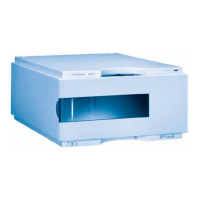5Methods
92 Operation Manual
Extending the NPD bead life
These actions, together with the automated heatup and adjust procedures, can extend bead
life considerably.
• Use the lowest practical Adjust Offset value. This will result in a lower applied bead current
during operation.
• Run clean samples.
• Turn the bead off when not in use.
• Keep the detector temperature high (320 to 335 °C).
• Turn the hydrogen flow off during solvent peaks and between runs.
Turning hydrogen off during a solvent peak When using the NPD, the baseline shifts after a
solvent peak and can take some time to stabilize, especially with chlorinated solvents. To
minimize this effect, turn off the hydrogen flow during the solvent peak and turn it back on
after the solvent elutes. With this technique, the baseline recovers to its original value in less
than 30 seconds. This also extends the life of the bead. The hydrogen can be turned on and off
automatically as part of a Run Table. See “Events”.
Turning hydrogen off between runs To extend bead life, turn off the hydrogen flow between
runs. Leave all other flows and the detector temperature on. Turn on the hydrogen flow for the
next run; the bead will ignite almost immediately. The process can be automated with Run
Table entries.
Recommended Starting conditions
Table 7 Recommended starting conditions
Gas type Suggested flow rates
Carrier gas (helium, hydrogen, nitrogen
*
)
* Flow rate must be less than 3 mL/min when using hydrogen as carrier gas.
Capillary: choose an optimal flow rate
based on column dimensions.
Detector gases
Hydrogen 1 to 3 mL/min
Air 60 mL/min
Makeup Flow (He, N
2
†
)
† Helium is recommended for best peak shapes.
1 to 20 mL/min, less is recommended
Bead voltage
Blos bead.
• Use Auto Adjust, Dry Bead, and let the GC set the applied bead current for you.

